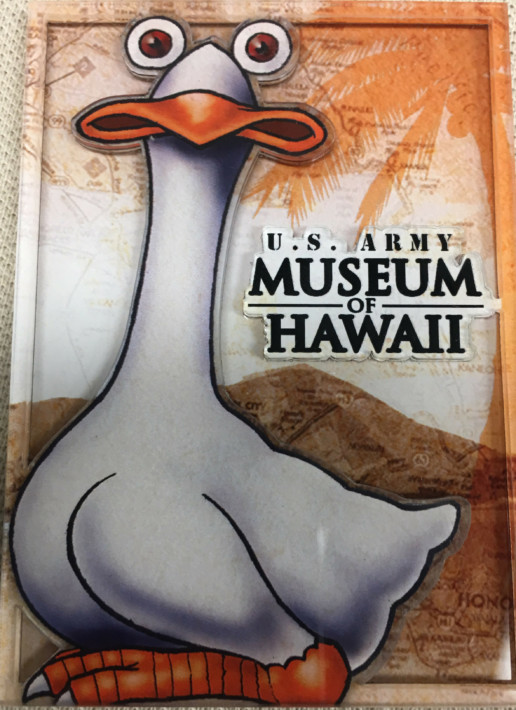Education
The Hawaii Army Museum Society (HAMS), located in the heart of Honolulu, Hawaii, serves as a beacon of military history in the Pacific. The importance of historical education, particularly related to the military, cannot be overstated. It is through understanding our past that we can navigate our present and future. The Hawaii Army Museum Society plays a crucial role in this educational journey.
Established in 1976, the museum is a treasure trove of military artifacts, exhibits, and stories. It offers a unique opportunity to delve into the rich military history of Hawaii and the Pacific region. The museum is not just a collection of artifacts; it is a center of learning, a place where history comes alive. It shares the tales of bravery, sacrifice, and resilience that have shaped the course of history.
The museum’s exhibits cover a wide range of topics, from the ancient Hawaiian warriors to the modern U.S. Army Corps. Each exhibit is meticulously curated, providing a comprehensive and engaging learning experience. The museum also offers educational programs and resources, making military history accessible to all, regardless of age or background.
Visiting the Hawaii Army Museum Society is more than just a trip to a museum; it’s an educational journey through time. It’s a chance to gain a deeper understanding of the military’s role in shaping our world. It’s an opportunity to appreciate the sacrifices made by those who served and continue to serve in the armed forces.
Educational Tours
3 week advanced notice is required. Tours are schedule Tuesday thru Saturday. 30 student maximum per tour (not including adult chaperone)
JROTC TOURS
Museum Tours are scheduled Tuesday thru Saturday. 30 Student maximum per tour (not including adult chaperones). Cadets must be in uniform, however, school shirts or like attire is acceptable.
PRIVATE TOURS
Tours are scheduled Tuesday thru Saturday. 30 ppl maximum per tour.

The Oozlefinch
Mythical Mascot of the Coast Artillery Corps
a compendium prepared by Mark A. Berhow
By end of World War I the Oozlefinch was firmly ensconced as the mascot of the Coast Artillery Corps. The Oozlefinch was a fictitious bird born in stories told at the Fort Monroe Officer’s Club during the early 1900s, and of which there is only one “official” image, a plaster statue that sat in a glass case for many years in the “Gridiron Room” of the officer’s club. This happened during the early years of the Coast Artillery Corps, following the merging of all the Army’s artillery regiments and batteries into a “Corps of Artillery” in 1901 and the separation of the units that manned the heavy fixed seacoast artillery weapons and units that manned the light mobile artillery units into the Coast Artillery Corps and Field Artillery Corps, respectively in 1907.
The Oozlefinch was a part what made up the distinctive “esprit” of the Coast Artillery Corps. Its story was spread by the close-knit group of officers who served in the Corps though conversation, letters, and most importantly for us latter day historians, military newspapers and professional journals.
By the 1920s the legend of the Oozlefinch had been set. There was only one Oozlefinch—the one resting in the glass case in the “Gridiron Room” of the Fort Monroe Officer’s Club. The Oozlefinch spent much of his time in silent contemplation (after all, he was a statue). Occasionally during the 1930s and early 1940s he would stir and speak out on the issues of the day, which were then recorded in the Fort Monroe newspapers and in the Coast Artillery Journal. For example: “What I Mean, We gotta Keep Advancin’,” by Oozlefinch, Coast Artillery Journal, Vol. 72, No. 1, Jan. 1930, pp. 49-52; and “This Man’s Army” by Private Oozlefinch,Coast Artillery Journal, Vol. 72, No. 4, Apr. 1930, pp. 366-368.
His image was used for informal insignia, signs, lapel pins, paperweights, and earrings. Apparently, some of the Coast Artillery antiaircraft units used his image as an insignia during their service overseas in World War II. The Oozlefinch went on to become the patron mascot of the army missilemen of the 1950s.
The story of the Oozlefinch is best told by those who were there in their own words. The rest of this article will be composed of passages from the original articles—my comments are in italics, direct quotes are in regular text.
One of the members of the group of officers at Fort Monroe who developed the Oozlefinch story was E. R. Tilton, who was then assigned to the Quartermaster Corps. His story of the origins of the Oozlefinch and its association with the infamous “Gridiron Club” still makes for good reading. (From: “History of the ‘Oozlefinch’,” By Colonel E. R. Tilton, Liaison, June 21, 1919, reprinted in Coast Artillery Journal Vol. 69, No. 1, July 1928, pp. 60-63.)

